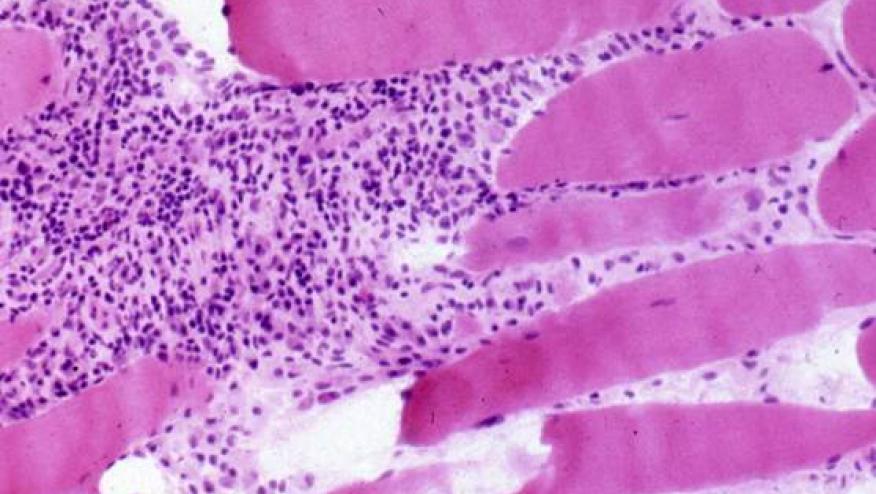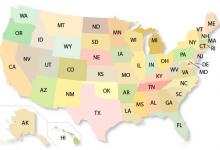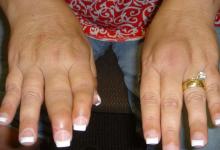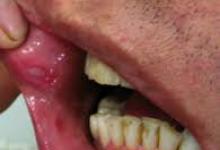Predicting Treatment Response in Inflammatory Muscle Disorders Save

Rheumatologists looking for clues to whether their patients with certain inflammatory myopathies will improve on immunosuppressive drugs may find them in a new study appearing in Arthritis Care & Research.
Presence of dermatomyositis-specific autoantibodies, shorter time between symptom onset and diagnosis, dysphagia, and relatively intense initial therapy were each associated with better treatment response at 1 year, reported Fabricio Espinosa-Ortega, MD, and colleagues at the Karolinska Institute in Stockholm.
The researchers were particularly interested in the potential for autoantibodies to serve as a predictor of response to corticosteroids (the most common form of therapy) and other immunosuppressive drugs in patients with idiopathic inflammatory myopathies, a category that includes dermatomyositis and polymyositis.
When these antibodies are present, Espinosa-Ortega and colleagues explained, the clinical presentation is often quite different than when they are absent. Thus, they hypothesized, they may also indicate whether patients are more or less likely to improve on standard therapies.
The investigators drew on Swedish national registry data on 156 patients with inflammatory myopathies. About 45% had dermatomyositis (including 5% with an amyopathic form), while the rest had polymyositis. One-quarter also qualified for diagnosis of antisynthetase syndrome. Median time from symptom onset to diagnosis was 3 months (interquartile range [IQR] 1.0-8.5).
Steroid treatment was recorded for 90% when entered into the registry, and 78% used additional immunosuppressive drugs at some point.
The researchers developed an "improvement score" based on a variety of standard measures, including patient- and physician-reported symptom evaluations. This score could range from 0 to 100, with 20-39 categorized as minimal response, 40-59 as moderate, and 60 or higher as major.
Median improvement after 1 year of treatment was 27.5 points (IQR 10-51). Most significantly, those positive for dermatomyositis-specific autoantibodies had a median improvement of 48 (IQR 11-63), whereas it stood at 21 (IQR 7.5-42) among patients lacking any of the autoantibodies assayed. On the flip side, median improvement in patients showing immune-mediated necrotizing myopathy autoantibodies was just 7.5 points (IQR 2.5-35).
Expressed another way, odds of achieving at least moderate response to treatment were quadrupled in those with dermatomyositis-specific autoantibodies versus those with no autoantibodies (OR 4.12, 95% CI 1.2-16.5).
Multivariate analysis identified the following additional predictive factors with P<0.05:
- Increasing initial steroid dose: OR 1.04 per 1 mg for each level of response
- Dysphagia: OR 3.02 for minimal response and OR 3.20 for major response (nonsignificant OR 2.10 for moderate response)
- Time from symptom onset to diagnosis: OR 0.86 for major response
- Other factors considered but found not to predict treatment response included erythrocyte sedimentation rate, use of cyclophosphamide, and diagnosis of antisynthetase syndrome.
The study came with a number of limitations: nonstandardized assays for autoantibodies, reliance on registry data that could contain errors, arbitrary thresholds for treatment responses, small numbers of patients, and potential that patients may have had aggressive treatment prior to entering the registry.
Primary Source
Arthritis Care & Research
Source Reference: Espinosa-Ortega F, et al "Factors associated with treatment response in patients with idiopathic inflammatory myopathies: a registry-based study" Arthritis Care Res 2022; DOI: 10.1002/acr.24498.
1 Comment









If you are a health practitioner, you may Login/Register to comment.
Due to the nature of these comment forums, only health practitioners are allowed to comment at this time.